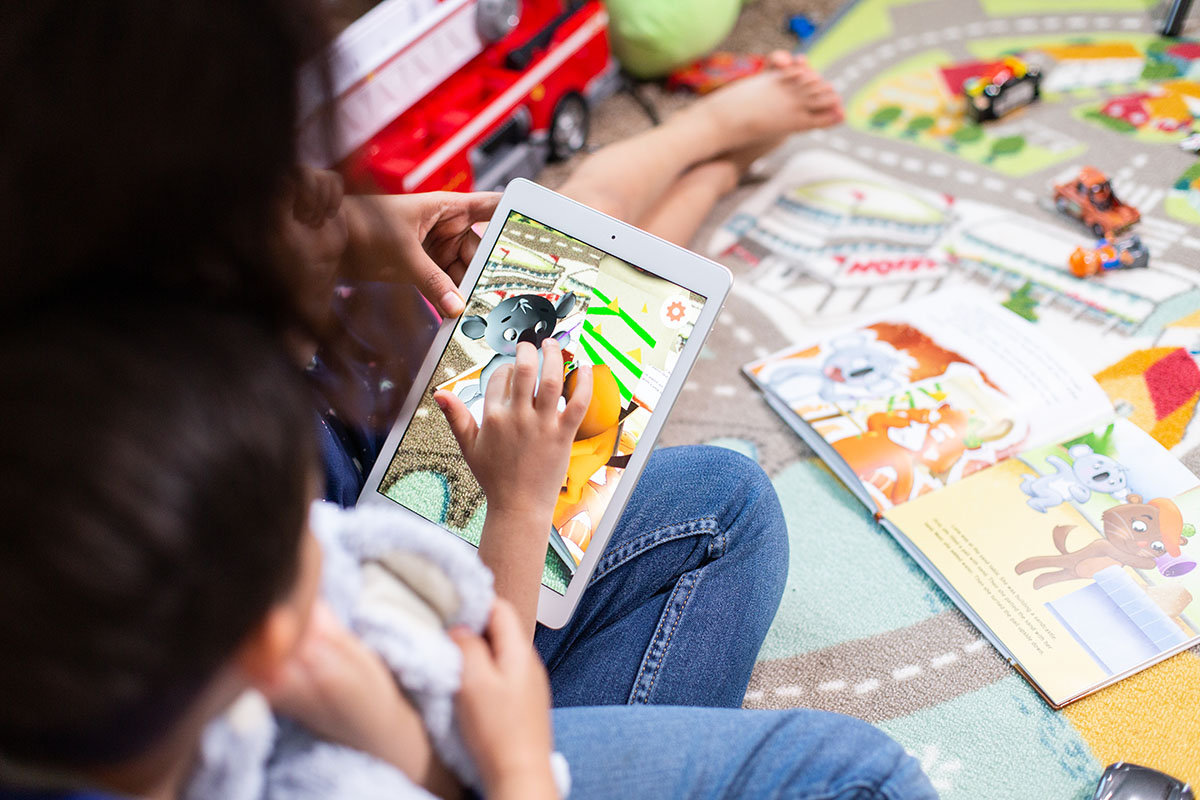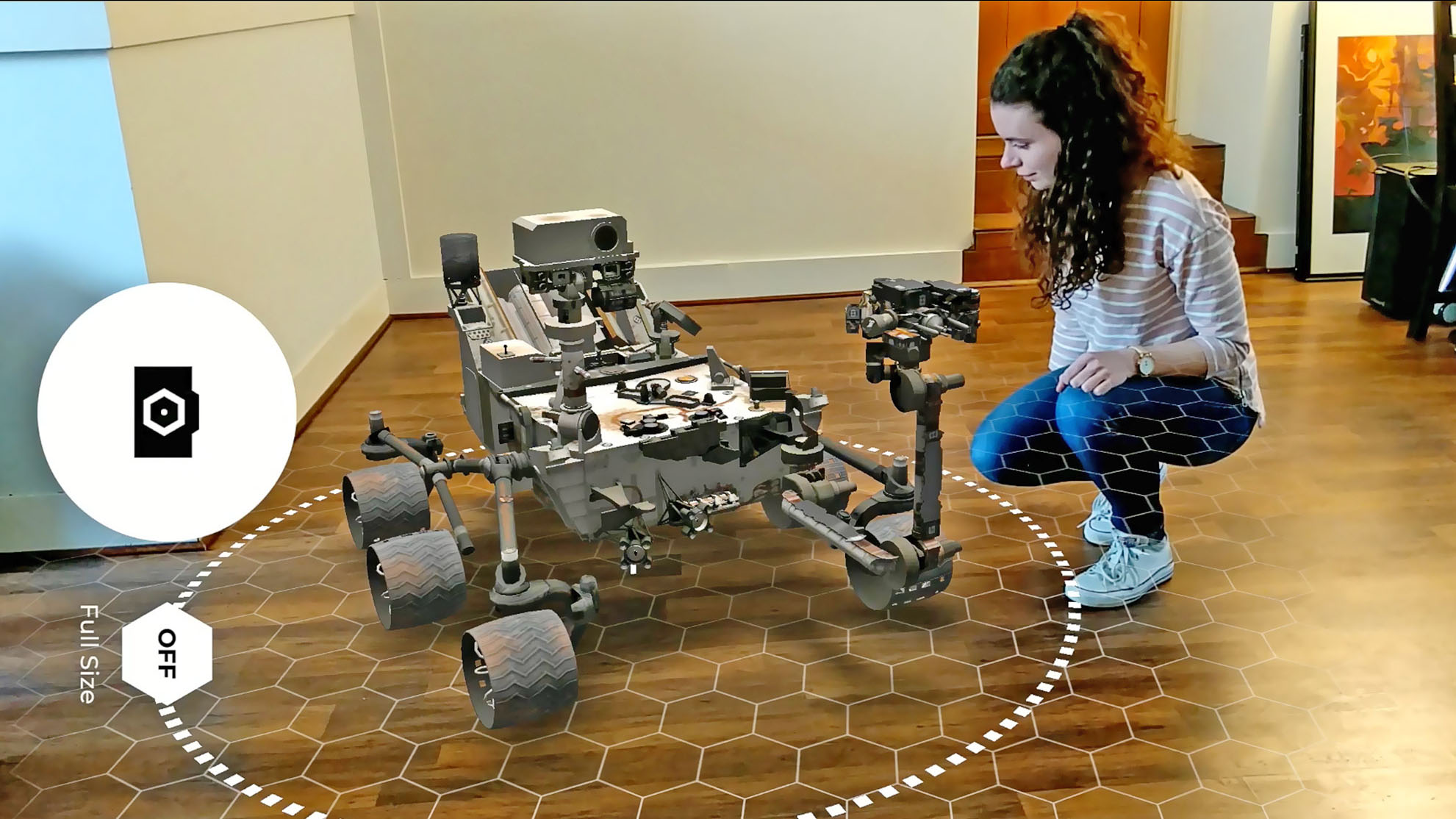How Augmented Reality Will Bring Space Books to Life

Michael D. Shaw is a biochemist and freelance writer. A graduate of the University of California, Los Angeles and a protégé of the late Willard Libby, winner of the 1960 Nobel Prize in chemistry, Shaw also did postgraduate work at the Massachusetts Institute of Technology. Based in Virginia, he covers technology, health care and entrepreneurship, among other topics.
When we read about the glories of space, we often miss the most magnificent part about exploring it: the audiovisual experience. From seeing the beauty of Earth from space as a breathtaking "blue marble" to hearing the words Neil Armstrong spoke when he first stepped onto the lunar soil, the sights and sounds of the most famous space missions are what make these iconic endeavors so memorable
No conventional printed book captures the totality of these moments. Imagine opening a book and clicking on a screen, where the first spacewalk is not a picture on a page but a moving, 3D astronaut that pops out of the page. As the astronaut works on a digital mockup of the International Space Station's exterior, you hear a real recording of an astronaut speaking with capcom while the ambient sounds of the spacesuit's various pumps and fans hum in the background.
Imagine, too, a 360-degree view of Halley's Comet, where you do not have to wait 75-76 years to see the icy nucleus and dusty tail of this "dirty snowball." By zooming in and maneuvering around the comet with your fingertips, you can explore the comet's surface through the eyes of a spacecraft and watch it shed particles of dust as it veers closer to the sun.
Related: Take One Giant Leap to the Moon with New Augmented Reality Apps
A book that augments reality and immerses readers in a story by physically engaging the senses is a new way to educate and entertain readers. For children who spend more time looking at screens than books, and for readers who sometimes find it hard to maintain their attention with a traditional book, augmented reality (AR) is a way to make books more interactive and accessible.
By augmenting reality, elements of the digital world become part of a person's perception of the real world. AR technology can digitally enhance how we read a book or explore the environment, in contrast to virtual reality (VR), which replaces the real world with a simulated one.
Breaking space news, the latest updates on rocket launches, skywatching events and more!
It's no coincidence that the people at the forefront of this novel approach to reading and learning also live in Houston, which is home to NASA's Johnson Space Center.
Two such people are Ronak Singh and Sami Khan, co-founders of The Wunder Company, a Houston-based publisher that uses AR to turn passive viewers of content into active participants in a story. According to Singh, the future of reading about space — and the broader fields of science, technology, engineering and mathematics (STEM) — will be an entirely new experience.

"The Golden Rule" is the first augmented-reality book created by The Wunder Company to provide a more immersive experience for young readers.

"The Golden Rule" is the first augmented-reality book created by The Wunder Company to provide a more immersive experience for young readers.
With augmented reality, reading will be more experiential than reading a hardcover, paperback or e-book, with 3D images you can touch, tap or swipe.
"Augmented reality transforms screen time into a chance to make more productive use of time," Singh said. "By turning passive consumers of content into active participants in a story that is as adventurous as an author chooses it to be, AR augurs a major change — change for the better — for readers, writers and teachers."
Change of that sort promises to change the publishing industry, from the way the industry operates to the variety of books publishers print about STEM and space.
If a more interactive book can increase people's interest in science, we should race to publish more books about the grandeur of space.
Books that augment how we consume knowledge by augmenting reality are a gateway to a variety of stories: of tales about space travelers and imaginary worlds, of real-life engineers and valuable life lessons.
As The Wunder Company expands its library to include AR-related titles about space and science, parents and children will have a chance to read and interact with books in a new way.
Other publishers are also beginning to infuse space books with AR. For example, the "Augmented Reality Space Encyclopedia" by DEVAR Books uses a free mobile app to bring 3D animations to a kid-friendly reference book about space. To get a taste for how it works, you can also check out the free AR e-book and app "Sam Explores Our Universe," created by the Faulkes Telescope Project.
With this new format for books, space itself will become more experiential. Reading these books will bring us closer to seeing — and wanting to reread about — the glories of space.
- Want a Closer Look at the Moon? Try It in AR with This Lunar Model and App
- Smithsonian Channel Crafts AR Game for Apollo Moon Landing Fans
- Take an Amazing Solar System Tour with This Mobile Augmented-Reality App
Follow us on Twitter @Spacedotcom and on Facebook.


